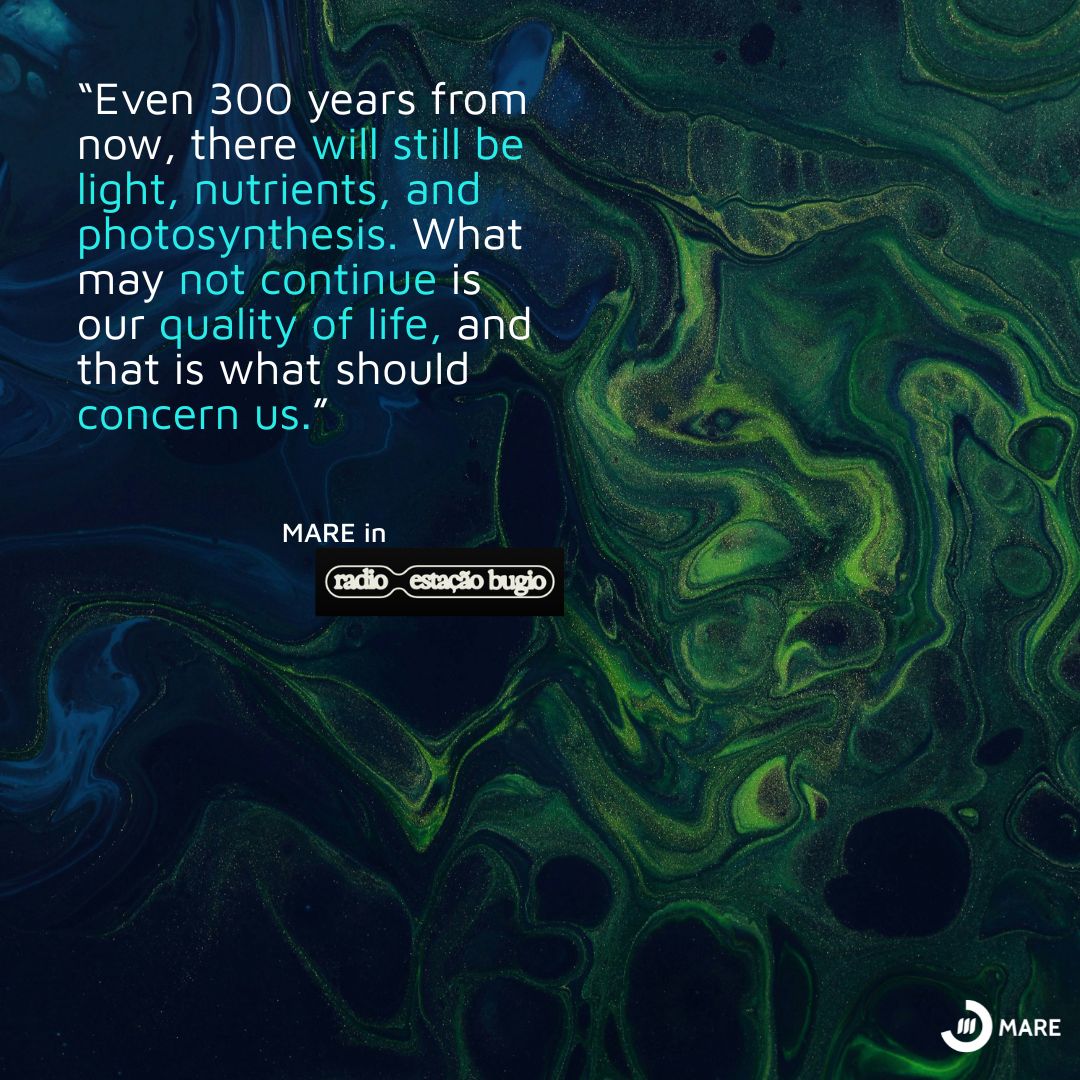Phytoplankton and Satellites: Vanda Brotas brings the invisible from the Tagus to the Bugio Radio Station
 At the mouth of the Tagus River, where the fresh water of the river meets the salt water of the Atlantic Ocean, stands the Bugio Lighthouse. It is at this border point that Rádio-Estação do Bugio is born, an experimental radio station that, between August and September 2025, broadcasts live soundscapes and conversations with scientists, artists, activists, and historians involved in the care and observation of this marine territory. In one of these episodes, the guest was Vanda Brotas, professor at the Faculty of Sciences of the University of Lisbon and researcher at MARE/ARNET, with a long career in the study of phytoplankton and the observation of the color of the ocean from space.
At the mouth of the Tagus River, where the fresh water of the river meets the salt water of the Atlantic Ocean, stands the Bugio Lighthouse. It is at this border point that Rádio-Estação do Bugio is born, an experimental radio station that, between August and September 2025, broadcasts live soundscapes and conversations with scientists, artists, activists, and historians involved in the care and observation of this marine territory. In one of these episodes, the guest was Vanda Brotas, professor at the Faculty of Sciences of the University of Lisbon and researcher at MARE/ARNET, with a long career in the study of phytoplankton and the observation of the color of the ocean from space.
On the theme “Phytoplankton and Satellites: Observing the Invisible in the Tagus,” Vanda Brotas takes us through the microscopic universe of microalgae that sustain marine life. She talks about the role of these communities as the basis of the food chain and as regulators of essential cycles, such as carbon and oxygen. She explains how satellite images reveal seasonal and environmental patterns that would go unnoticed without this technology, allowing us to better understand the dynamics of the Tagus estuary.
Throughout the conversation, the researcher emphasizes the importance of continuous monitoring programs, such as the one she has been coordinating on the Tagus River for over 25 years, and explains both the limitations and the enormous advantages of remote observation: "Satellites only show the surface. To know what is happening below, you need to combine these images with direct measurements on site. We are fortunate to have seen this technology advance so much, because today it allows us to observe phytoplankton from space, understand what is changing in the ocean, and assess the extent to which human activity is affecting it."
The episode, recorded as part of the A Call to the Sea artist residency and the European Bauhaus of the Seas Sails project, also provides an opportunity to reflect on possible futures. In imagining a scenario in which the Bugio Lighthouse is transformed into a submerged station, Vanda Brotas reminds us that phytoplankton continues to fulfill its vital role: “Even 300 years from now, there will be light, nutrients, and photosynthesis. What may not continue is our quality of life, and that is what should concern us.”
Created by artists Diana Policarpo and Bernardo Gaeiras, Rádio-Estação do Bugio combines science and art to reveal the invisible life of the estuary, bringing together marine sounds, atmospheric pulsations, and human and non-human testimonies. The episode with Vanda Brotas is an invitation to observe the Tagus and the ocean with renewed attention, curiosity, and a sense of responsibility.
To access the episode, click HERE
Text by Vera Sequeira
